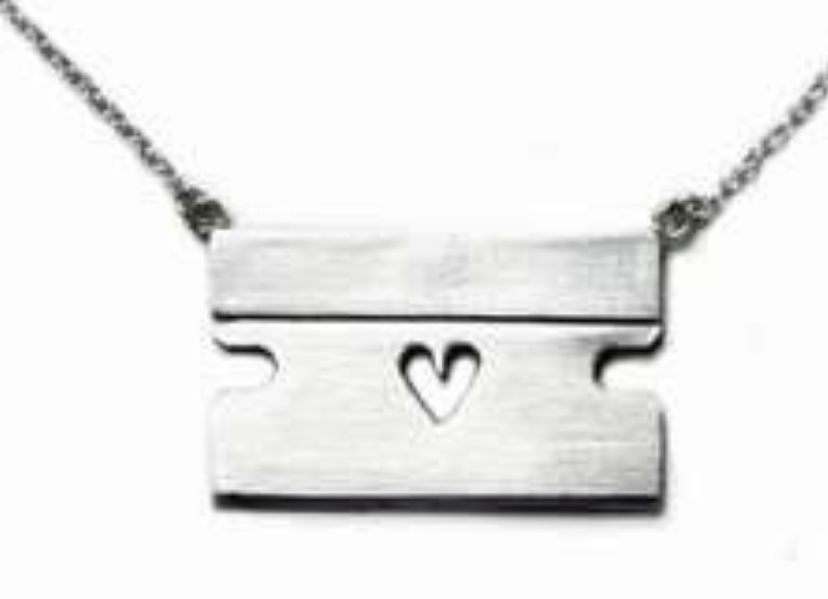This is a nice compliment to our post of the t-shirt with pictures of safety pins on it (an example of the co-optation of punk culture):
When you’re so tough that you are compelled to hang a razor blade around your neck, but not so tough that you want an ouchie.
This one is a nice example, also, of the way in which we “play” with gender by collapsing traditionally distinct ideas (masculine toughness symbolized by the razor blade and sweet femininity symbolized by the heart) (see also sparkly camouflage, trucker hats with the word “princess” written across them, and pink sports jerseys).
Buy the fake razor blade jewelry here (or don’t).
Lisa Wade, PhD is an Associate Professor at Tulane University. She is the author of American Hookup, a book about college sexual culture; a textbook about gender; and a forthcoming introductory text: Terrible Magnificent Sociology. You can follow her on Twitter and Instagram.

Comments 6
Anonymous — December 3, 2008
Razor blade number one suggests self-injury. Number two suggests cocaine use. Do the people who buy and wear these get that?
CO-OPTING SUBCULTURES: GOTH PUNK BARBIE » Sociological Images — November 27, 2009
[...] For other examples of the commodification of punk or alternative subcultures, see here and here. [...]
The Commodification of Rebellion » Sociological Images — January 26, 2010
[...] more examples of commodified resistance, see our posts on the (not a real) razor necklace, H&M’s safety pin shirt, goth punk Barbie, “pre-stressed” guitars, and Ben [...]
Kelsey — February 5, 2010
Razorblade necklaces can be considered “fashionable” to some. I have seen people wearing them out in public, thinking they are cool for having a “weapon” around their neck. I believe that many of the people wearing these overlook is the meaning behind it. Half of them probably aren’t even cocaine addicts or cutters. They are just looking for something “edgy and cool”. It’s all about fitting in.
Baxter — June 10, 2010
TOO FAR. TOO. FUCKING. FAR.
chad — November 27, 2010
I eat babies